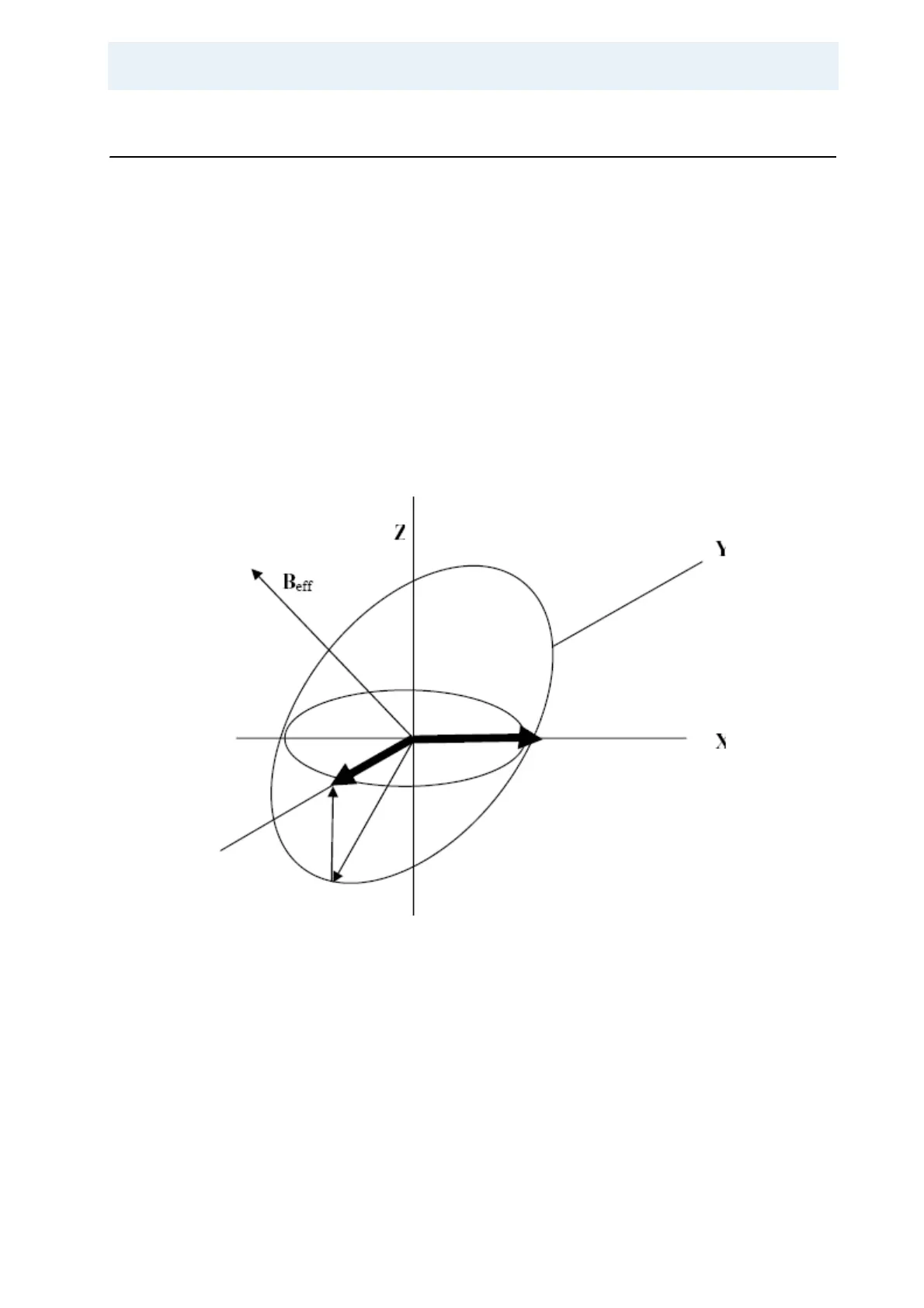CRAMPS: General
User Manual Version 002 BRUKER BIOSPIN 273 (327)
Quadrature Detection and Chemical Shift Scaling 21.4
Under homonuclear decoupling, the magnetization precesses in the transverse
plane of a tilted rotating frame whose new z-axis is along the direction of the effec
-
tive field. The projection of this plane into the X-Y plane is therefore an ellipse,
and the signal intensities sampled in the two quadrature channels along the x and
y direction are different, since these are the major and the minor axes of the pro
-
jected ellipse. As can be seen from fig. 1, the X and Y observe direction will see a
signal of different amplitude. This means that quadrature images will always be
present, if quad detection is used. In the case of single detection, the signal may
be smaller or larger depending on the receiver phase. The standard procedure is
to use quad detection and suppress the quad images by a suitable phase cycling
scheme. This is however not as straightforward as it is with standard excitation/
observation. The quad phase cycling must occur in the precession plane, so a
prepulse is required to tilt the initial magnetization into the direction of the preces
-
sion axis. Usually, a combination of 2 pulses is used for initial excitation (90
o
x,y,-x,-
y
+ (90
o
-55
o
)
adjust
).
Figure 21.1. Difference in Amplitude of the Quadrature Channels X and Y
The difference in amplitude of the quadrature channels X and Y, caused by the
tilted precession plane. Along X, the full amplitude is observed, along Y only the
component in the XY-plane is detected.
As the spins precess around a tilted effective field and not only around the direc-
tion of the external field, the precession frequencies are changed, which means
that the observed chemical shifts are changed. As the frequencies are always
smaller than in the standard excitation/observation scheme, the chemical shift
